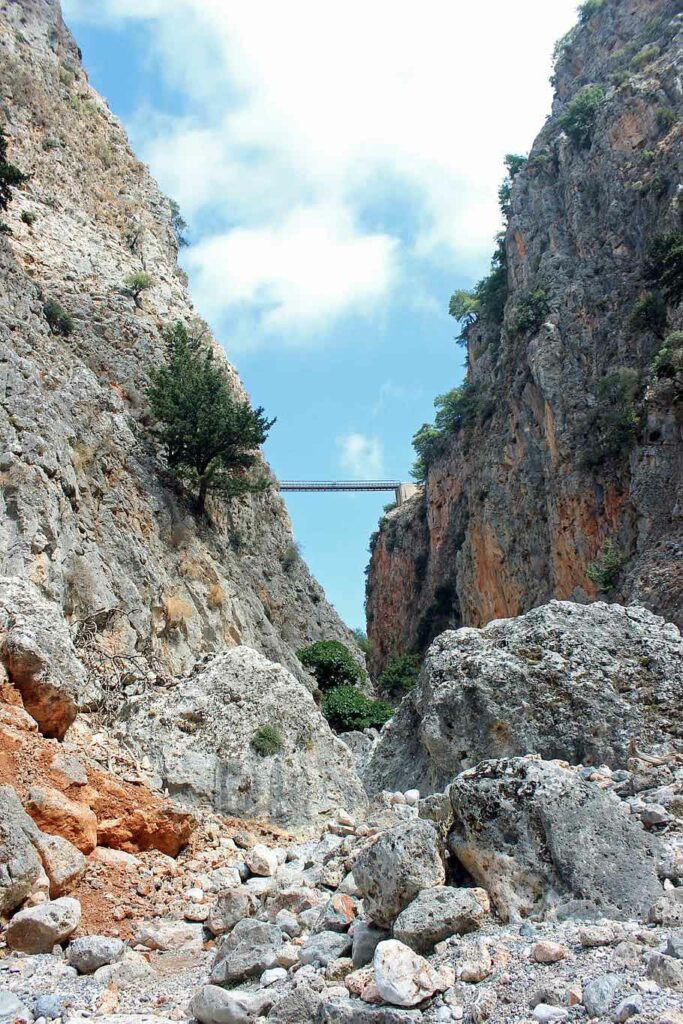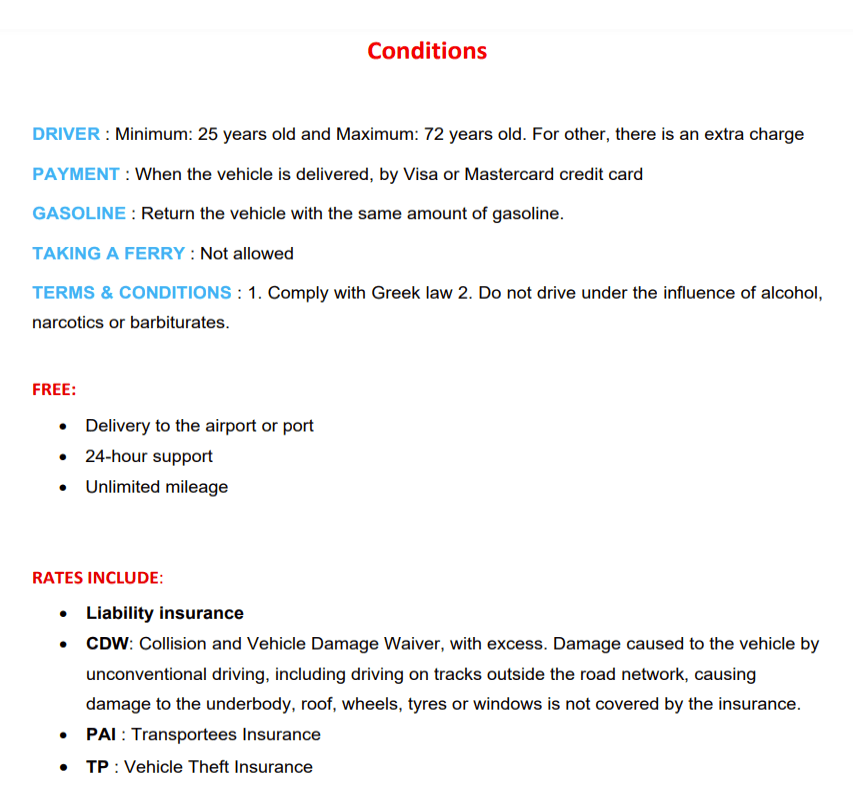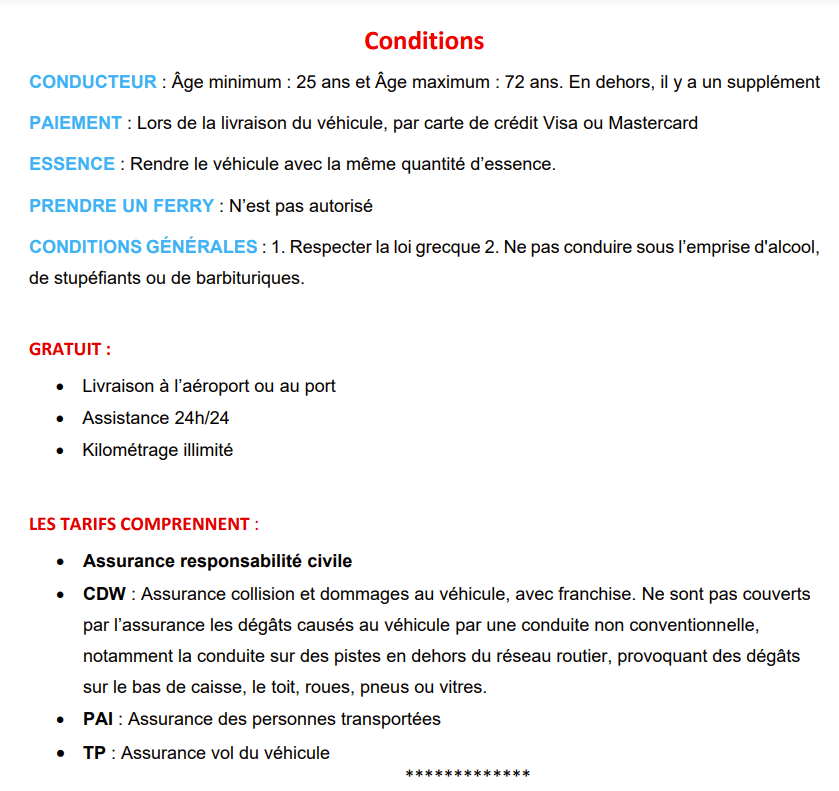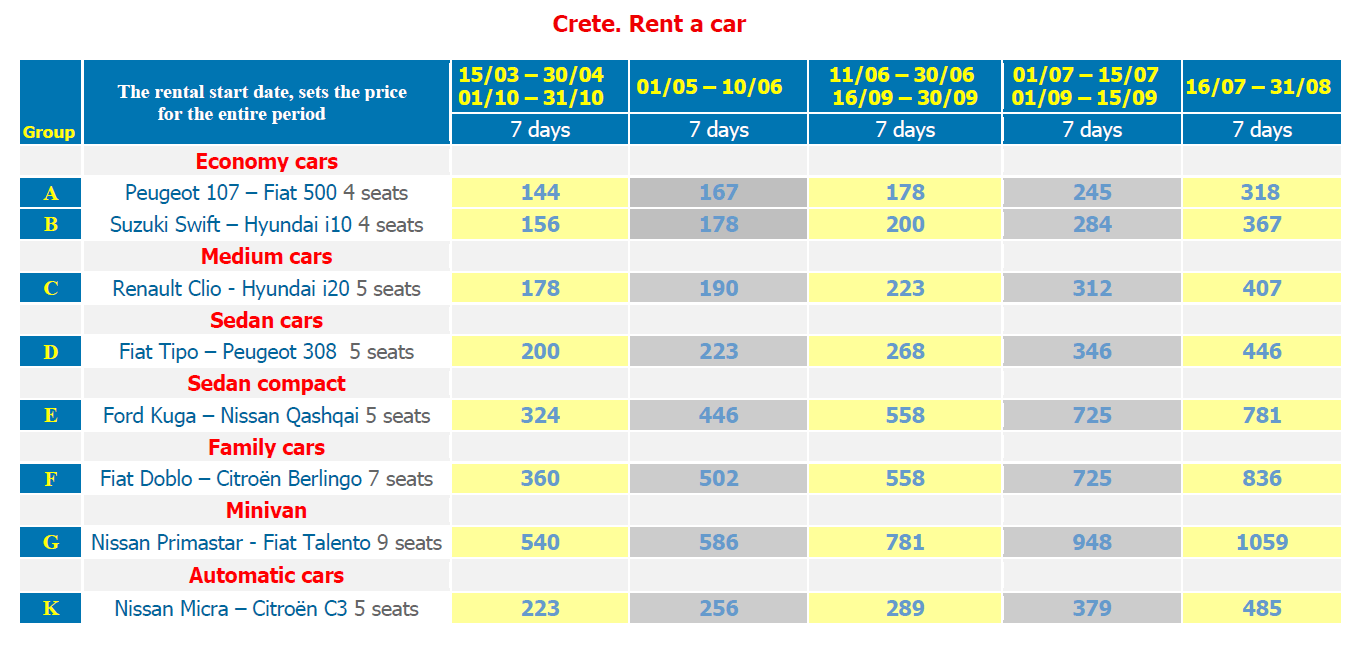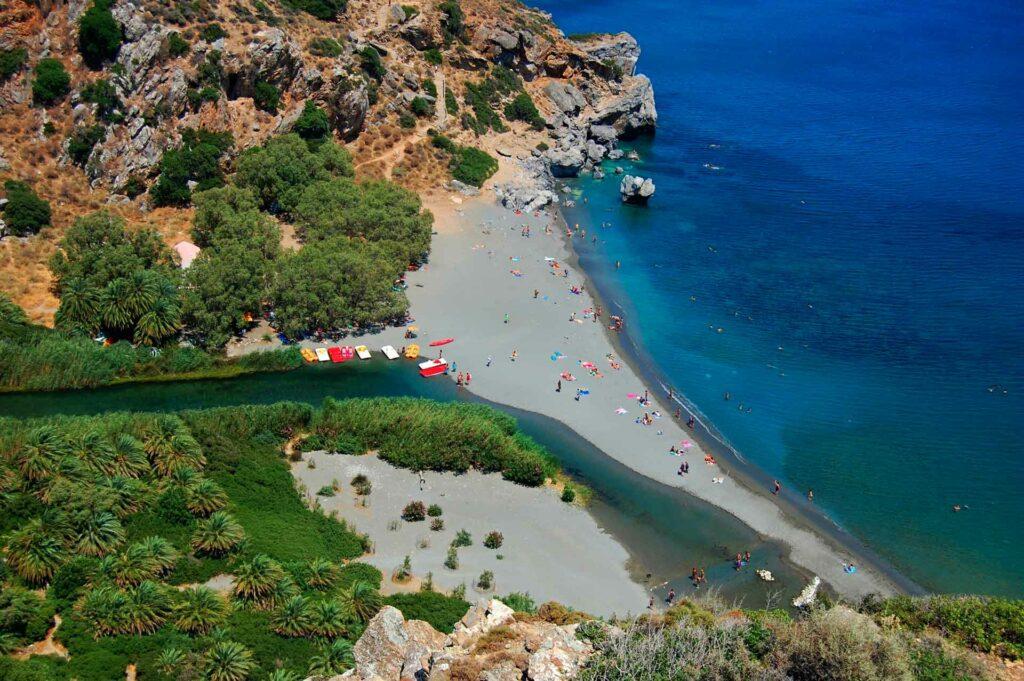Home » BLOG » Cities of Crete » The city of chania
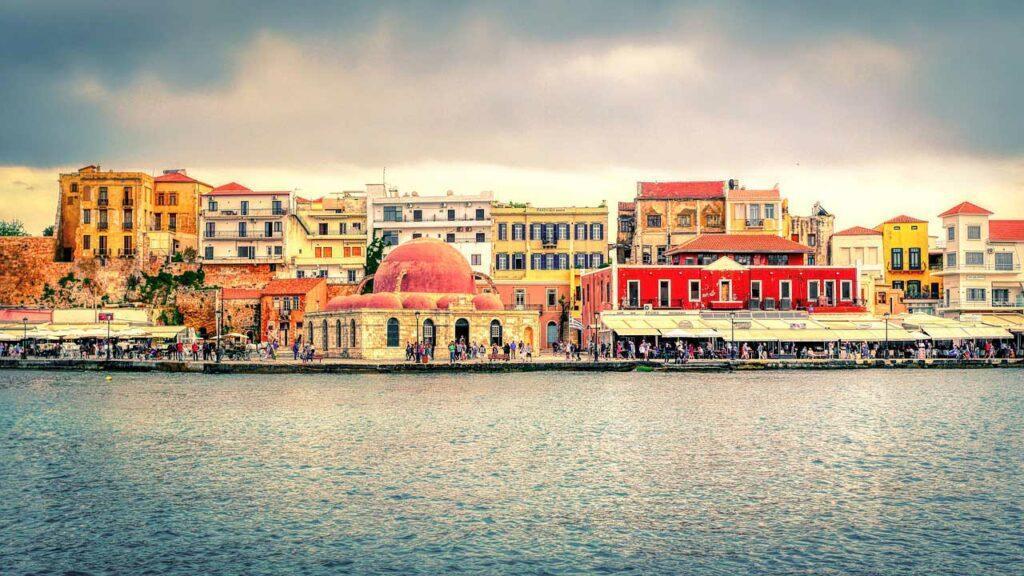
City of Chania (Hania)
Map of the city
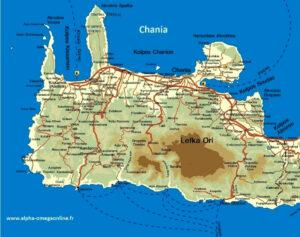
The capital of Crete until 1972, Chania is now the second largest city on the island, after Heraklion, with its own airport.
The capital of Crete until 1972, Chania is now the second largest city on the island, after Heraklion, with its own airport. It is considered one of the most attractive cities in Greece and is actually made up of two parts: the new town and the old walled city, with its old port and Venetian, Ottoman and Jewish quarters.
It is dotted with a multitude of historic buildings, fortifications, arsenals, old mansions, museums and churches, some dating back to the 13th century. From Venetian to Ottoman times. Chania is an exceptional blend of history, which contributes to its charm. A stroll through its maze of narrow streets is a veritable journey through the history of Crete.
In the coming years, however, the question of mass tourism will arise, particularly with the development of cruises and giant liners, which pour thousands of people into a small town at the same time...
Chania. Beginning of the tour
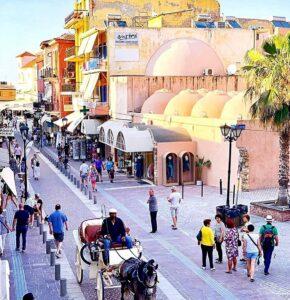
Here is a day of discovery:
It all starts with the entrance to the old town through the Halidon street, named after a family of Cretan resistance fighters against the Ottomans. A colourful shopping street with the Venetian monastery of St Francis on the left and the Orthodox cathedral of Chania on the right.
The Archaeological Museum was based on the premises of this monastery, in the heart of the town of Chania. It moved to new premises in 2020. And it has moved into a modern, functional building, 2.5 km from the old port.
The history of the monastery, which formerly housed the museum for half a century, is a spectacle in itself!
This is a old Franciscan monasteryProbably built in the early 16th century, it is the most important religious building to date. The history of this monastery over the last few centuries has been anything but boring!

In 1645, the Turks converted it into a mosque. You can still see the foundations of the minaret and the beautiful Turkish fountain in the inner courtyard. In 1913, the Greeks, who had liberated Crete, transformed it into a theatre and cinema!
In 1941, the Germans turned it into an ammunition depot. Fortunately, they spared it when they left the town.
The building was then abandoned to its fate until 1968, when it was finally converted into a museum after undergoing major maintenance work.
Today's museum houses a rich collection of archaeological finds from the region, dating from the Neolithic period to Roman times.

The most impressive pieces are the Roman mosaic floors from the 3rd century AD and the clay tablets bearing linear A and B writing. There are also statues from the Hellenistic and Roman periods. Minoan artefacts from the city and region of Chania. Coins, jewellery, sculptures, inscriptions, steles... A must-see! (see websit Chania Museum)
Right in front of the old archaeological museum, the church dedicated to Assumption of the Virgin Mary. And next to it, the old Turkish baths qui aujourd’hui abritent des échoppes. En 1965, ce bâtiment a été déclaré monument historique et jusqu’en 1994, il abritait une fonderie.
The domes of this building, which you can see in the photo above, were part of a Turkish hammam at No. 35 Halidon Street, one of the many hammams built in Chania during the Turkish occupation. This hammam was built on the site of the now-defunct Venetian monastery of Santa Clara. It was located opposite the monastery of Saint Francis.
The covered market (currently under construction)

Until 10 or 11 a.m., when the tourists start to wake up, the city has a feeling of serenity and enchantment. This is the best time to get a glimpse of the daily life of the inhabitants. For the best insight, go to

For the best overview, visit the city's indoor market.
It is an enclosed, cross-shaped gallery that houses over 70 food stalls, many of which offer fresh, locally produced fruit. You'll also find fish, dairy products, bread, pulses, spices, herbs and whatever else you need. It smells of the oriental sweetness. This indoor market was built in the early 20th century
This covered market was built in the early 20th century, and was modelled on the Marseille market after the demolition of the main rampart to the south of the city wall.
A few steps away is the famous "Iordanis" shop, where you can try a national speciality, the boughatsa. It's a typically Greek pastry, with puff pastry, custard, cinnamon, organic orange and icing sugar for the dusting... Delicious!
Arrival in the harbour
Starting early in the morning gives you the chance to see the old town and its Venetian port at the best time of day.
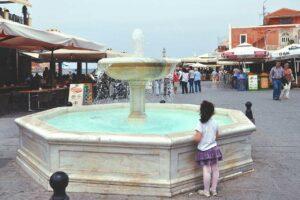
When the sun rises over the hill, tinting the proud mansions and the calm sea a deep red.
Return to rue Halidon and descend to the old harbour. Arrival at Place Santrivani (fountain in local Greek).
It's 10 o'clock and the city is waking up. The cafés, restaurants and alleyways around the Venetian port are full of tourists. They have just woken up and are having breakfast.
These harbour-side cafés are the best place for late risers to enjoy a drink or a good breakfast, watch the action and take the pulse of the city.
The Splatzia neighbourhood
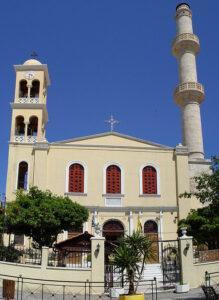
Splatzia square, known as "Place 1821", is the centre of a historic district. At the centre is the thousand-year-old plane tree, famous as a hanging place. Its underground fountain serves as a water reservoir. It was designed to last a siege of the town for 6 months!
This square was the centre of the Muslim quarter between 1645 and 1913, the period of Turkish occupation. The architecture of the old houses, the narrow streets and the squares bear witness to this. A walk in the shade of the narrow cobbled streets, with the scent of flowers adorning the wooden balconies, is an invitation to travel back in time.
There are also two Venetian churches, one dedicated to Saint Rocco and the other to Saint Nicholas. The church of St Nicholas was the Catholic church of the monastery of the order of Dominican monks of Chania and was built around 1320, but after the city was occupied by the Turks in 1645, it was converted into a mosque, and was the city's central mosque.
In 1918, after the departure of the Ottomans, the Cretans built a church in honour of Saint Nicholas. However, they kept the 35 m high minaret. So this church is unique in that it has an old Ottoman minaret and a traditional Christian bell tower.
Chania. Walk in the old harbor
Between 2pm and 6pm, most tourists are at the beach, while many locals enjoy a siesta. The buzz in the streets dies down for a few hours and everything seems peaceful. This is a good time to visit a museum and enjoy the coolness of the interior.
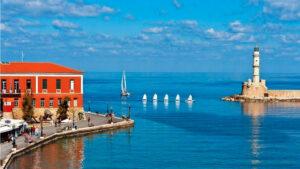
The naval museum is open every day from 10:00 to 16:00. It is a small but interesting museum located in the Venetian harbour and has a rich collection of exhibits. You will see miniatures of warships, old navigation instruments, old photos, an interesting representation of the Venetian city and an important collection of shells.

Behind the Koundourioti alley (Aktì Koundouriòti) is the heart of the old town. This is where people come in the early evening, when they want to take a stroll or grab something to eat after a day at the beach.
Zambeliou, Theotokopoulou, Angelou and Kondylaki are the most beautiful streets in the area. They are lined with old houses that have been converted into hotels, bars and restaurants.
Of these, the Renier manor house on rue Moschon is the most interesting example. It was built in the early 15th century to house a Venetian family, and today the remaining inner courtyard has been converted into a restaurant, where you can enjoy a delicious meal.

The original portal has been preserved, above which you can read the Latin inscription and see the Renier coat of arms. You can also admire the family chapel dedicated to Saint-Nicolas, which has been very well preserved.
Later in the evening, people start to gather around the cobbled alley of Koundourioti and Tombazi.
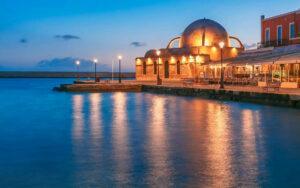
This alley is famous for the Hassan Pacha Mosque or Janissary Mosque. Today it is used as a centre for exhibitions and other cultural events.
). As they walk along the waterfront, they meet and exchange ideas for the night, then groups are formed and evening plans are made. The action continues into the early hours of the morning, mainly around the western part of Koundourioti Alley, with its many bars and discos. And around Enosseos Alley, east of the harbour, which houses the old Venetian arsenals.
The beaches
Chania's beaches are all to the west. Most of them are sandy and well organised, but don't expect to find secluded spots. They are literally covered with sun loungers and parasols. And all around, numerous hotels, restaurants and water sports spots.
If you don't mind the crowds and development, you can enjoy the cool, clean sea and try your hand at canoeing, skiing or surfing.
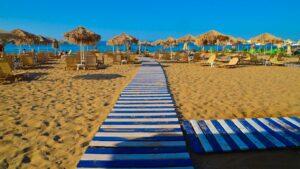
The Municipal beach of Hania is about ten minutes' walk west of the city. It can be reached by taking the street that starts behind the Musée de la Marine. There are cafés and restaurants all around. But, of course, in very high season, it's the first beach to be full of people.
A little further on, you will find the Aghii Apostoli beach which is also sandy and very pleasant. However, it too is crowded, and you may feel as squeezed.
Your best choice is Chrissi Akti (Gold Coast), located 2km west of Chania. It is a beautiful sandy beach and large enough to accommodate you. (for buses in Crete, see website KTEL)
In conclusion, Chania is a perfect holiday destination that caters for a wide variety of tastes. There are plenty of opportunities for cultural, historical and gastronomic discoveries, as well as swimming and water sports.
The surrounding area
The town of Chania is an ideal starting point for all kinds of highly recommended excursions. Firstly, the 18km hike through the famous Samaria Gorge. The wild natural beauty and unique experience will leave you with unforgettable memories.
Also of interest is the Akrotiri peninsula, steeped in the atmosphere of ancient monasteries. It separates the Bay of Souda, with its pretty natural harbour, and the Bay of Chania.
There are also a number of interesting villages and sites within easy reach by car, bus or boat. To the south, Sougia, Loutro, Agia Roumeli, Chora Sfakion and Paleochora. To the north, Kolymbari, Kissamos, Balos and the islands of Gramvoussa. And to the west, Falasarna, the monastery of Chrissoskalitissa and Elafonissi.
(see also our page Chania – Crete Top 10. And our map Chania area)
Et vive la Crète !
Editorial staff: (Nikos Papadogeorgakis / Degeorges Nicolas)
Rent a car in Greece: Crete (Heraklion, Chania, Rethymnon, Agios Nikolaos) – Athens – Rhodes – Corfu – Mykonos – Santorini – Thessaloniki – Preveza/Aktion/Lefkada – Patras/Araxos – Kalamata – Paros – Syros – Kos – Naxos – Lesbos – Thassos – Zakynthos/Zante

